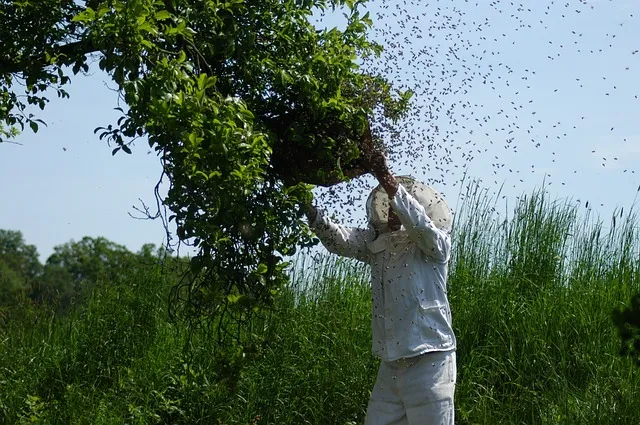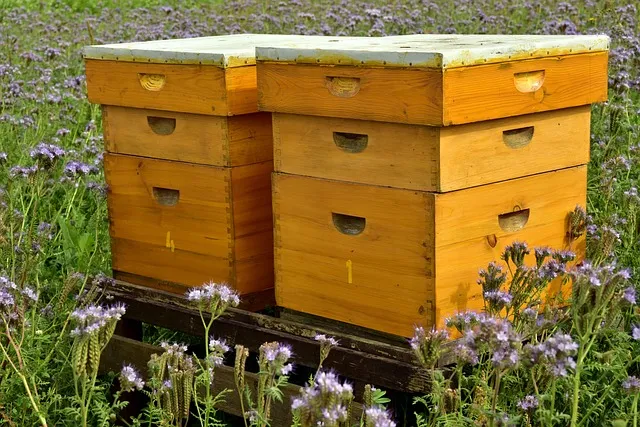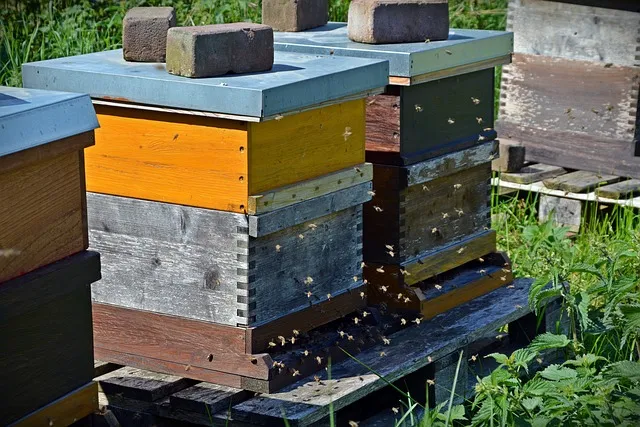How do you attract a swarm to a bee box?
Every beekeeper has an opportunity to get some free bees thanks to nature. Swarms divide from established honey bee colonies as a way of propagation or multiplication. This happens at least once a year. Attracting a bee swarm in a bee box requires some preparations. They will not just land in an empty box and make it a new home. It must be attractive to the buzzing ladies. There are worker bees in a colony known as scout bees. There are entrusted with the house hunting spree for a swarm. They spend about 30 minutes or more on a site evaluating it. This process may take days. The more attractive a nesting site is, the more scouts will appear.
Similar Articles you may like to read –
30 Best Flowers That Attract Bees, Butterflies, and Pollinators to Garden
Approximately how many flowers must bees visit to produce one pound of honey?
How long can bees stay in a swarm box?
What is the best bee hive design?
How do you attract a swarm to a bee box?
Swarming of bee colonies happens from late spring to summer. It may still happen in the fall, depending on your location. They choose fine weather, which coincides with nectar flow. When you come across swarm cells in your colony, this is the best time to start putting swarm traps and bait hives. If you notice some scout bees on a nesting site evaluating its suitability, avoid any form of disturbance. It dissuades them from settling there.
Swarms lure that honey bees like
Use of old brood comb
A dark comb is very attractive to scout bees. Placing a piece in a bee box will definitely increase the hive’s attractiveness. It is quite effective that you can find swarms moving into abandoned hives that have an old comb.
Propolis and other colony materials
In the absence of an old comb, other hive materials, such as propolis, can also attract a swarm.
Nasonov Pheromones
This is one of the most attractive scents to a honey bee swarm. It is excreted by scout bees and helps to direct a swarm in a chosen hive. Artificial products mimic this pheromone and are quite effective though hard to find.
Essential oils
Beekeepers have used essential lemon grass oil to attract a swarm. It has a strong scent; hence you do not require a strong scent, just a drop or 2. You can place the drops on a cotton swab and rub the hive’s interior.
Step-by-step process of attracting a swarm
Know the swarm season
When the swarming season is on, it gives you a better chance of sealing the deal. It generally starts in mid to end of spring, but the exact timing depends on your location.
Place a bait in the bee box
You can place a few old frames with the comb in the box.
Apply a Lure
It is advisable to make the new home smell as enticing as possible. Besides using beeswax, you can use pheromone lures or essential oils such as lemon grass.
Position the Box
The location is a critical factor in successfully attracting bees in a box. You should position it 15 feet above the ground for scout bees to see it quickly. Alternatively, you can place the box on tree branches. You should ensure it is secure enough to hold the weight of the box and bees. Be sure it is not in direct sunlight, as it can be too hot for bees.
Wait for Bees to Move in
You must be patient to see the fruits. Regardless of how best to have made you have prepared the hive, there is no guarantee that the bees will fall in love with it. Seeing bees buzzing around doesn’t mean they have taken residence. They may still be in the process of accessing it. However, you should keep checking since you don’t know when they will decide to occupy it.
More articles you may like to read –
What kind of music do bees like? Do honey bees dance?
What happens if you disturb a beehive at night?
Should you paint the inside of bee boxes?
What is the best color for bee boxes?
After the success
After successfully luring a swarm, you should refrain from disturbing them for a week. On settling, they will start to build a comb, and the queen will start to lay eggs. However, a disturbance may cause them to abandon their investment and look for another home. After a week, eggs will have hatched into larvae, compelling the bees to stay. Some swarms may come with a virgin queen. It is good to inspect the swarm to ensure they are queen right. You should also feed them with sugar syrup until they are established. It is advisable to avoid spillage of the syrup or placing it in the open to prevent robbers. You should not move them into your apiary hastily since you may mess with their orientation settings. You can choose to move them in short distances until you reach the desired location.
When are Bees Most Likely to Swarm?
Bees are most likely to swarm during the spring and early summer months, typically between April and July. This is when bee colonies are at their peak population and food sources are abundant. Swarming is a natural reproductive process for honey bee colonies, where a new queen bee is raised and the old queen, along with a large portion of the worker bees, leaves the hive to establish a new colony. Warm and sunny days with temperatures around 70-80°F (21-27°C) are ideal for swarming, as bees prefer to swarm during favorable weather conditions. Beekeepers should be especially vigilant during this time to prevent swarming or capture swarms if they occur.
What can I Use as a Swarm Trap?
There are various options for swarm traps that beekeepers can use to attract swarms to bee boxes. One common choice is to use a standard bee box, such as a Langstroth hive, baited with a lure scent. Alternatively, some beekeepers use specially designed swarm traps, which are smaller and more portable than traditional hives. These traps often contain frames with comb or foundation to simulate a suitable nesting site for bees. Natural materials like wood, straw, or cardboard can also be used to construct makeshift swarm traps. Regardless of the trap type, positioning is key – placing traps in elevated locations near potential swarm sites, such as trees or buildings, increases their attractiveness to passing swarms.



